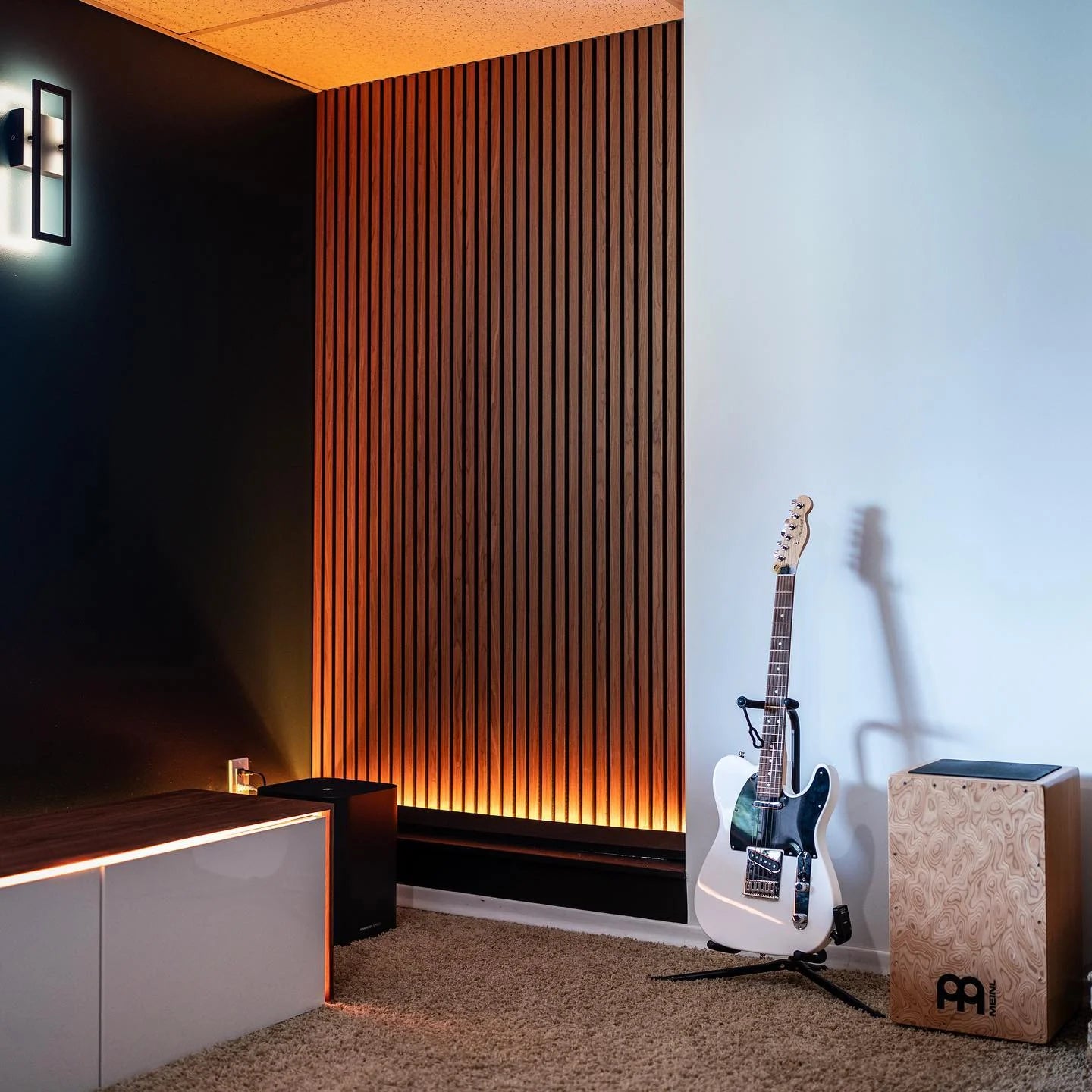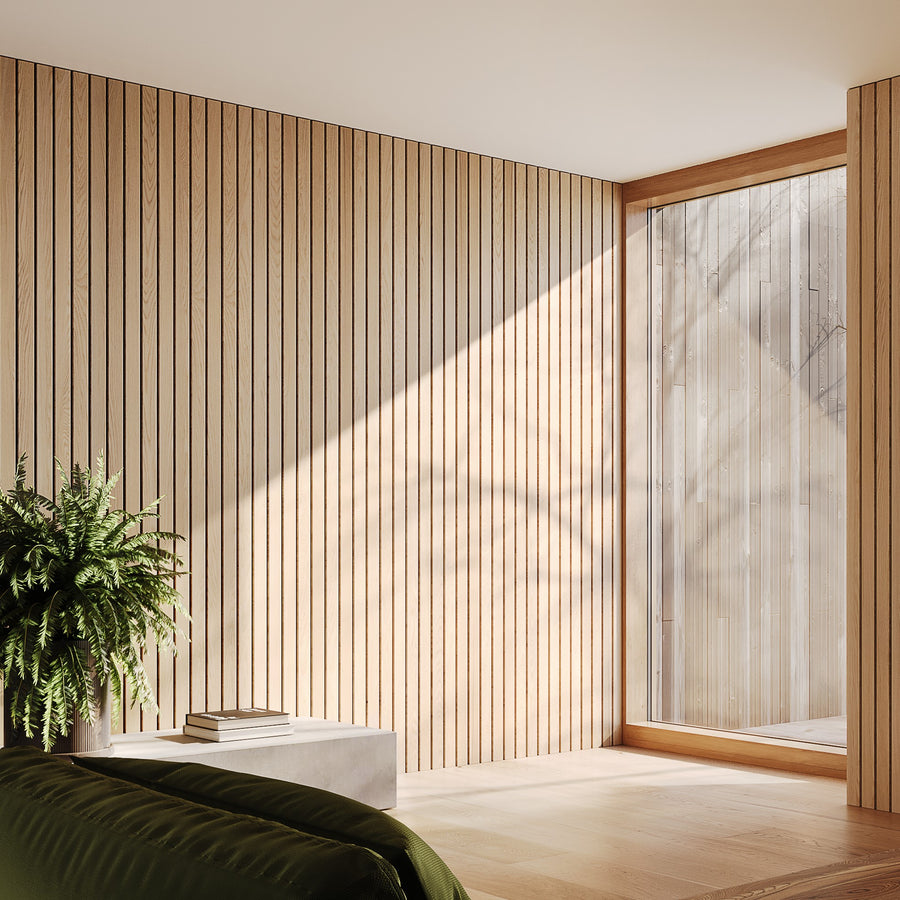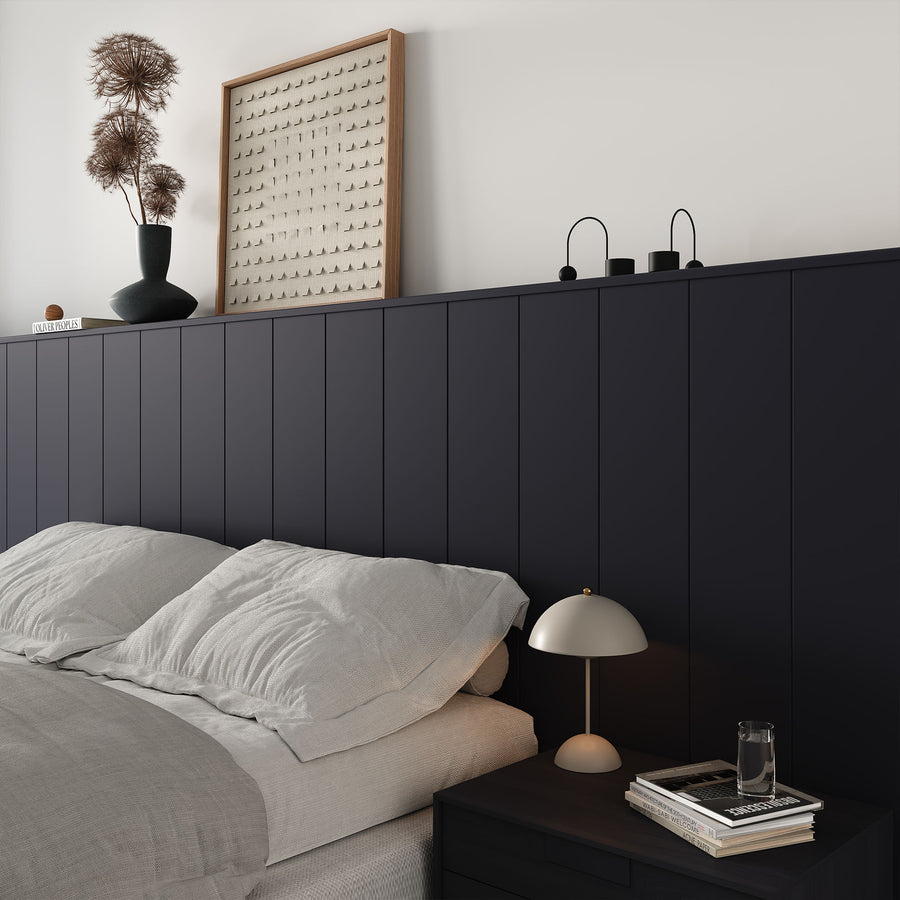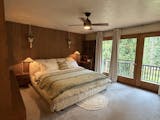Where to Place Acoustic Panels: A Comprehensive Guide

Acoustic panel placement is essential for achieving desired sound quality. Haphazardly placing the panels or covering every wall of your room with acoustic foam is unnecessary and will never give the desired results. This leads us to the critical question; where should you place acoustic panels? And, how to get the best results from your acoustic panels?
Acoustic treatment is crucial for any place where significant sound quality is desired. Different areas such as offices, restaurants, home theaters, living rooms, and even bedrooms can take advantage of a good acoustic treatment. However, due to a lack of clear directions, the acoustic placement is often done in an inefficient way, highly compromising the outcome of the treatment.
The Physical Properties of Sound and The Science Behind Acoustic Panels
Sound is simply our perception of vibrations in the air. In closed spaces, sound becomes more complex. It hits walls, ceilings, floors, furniture, fixtures, and any other objects including people. Based on the length, width, and height of your room, the sound waves also create resonances of their own. As an example, consider how your voice sounds in a washroom versus in your bedroom.
Acoustic sound panels seem deceptively simple at first, however, there is more to acoustic panels than just absorbing the sound. While installing acoustic panels, the placement of the panels is a game changer. In this post, we will discuss where to place acoustic panels, how acoustic panels work, and how you can install different types of acoustic panels to get the most advantage out of them.
Why Are Acoustic Panels Important?
Acoustic panels are one of the most talked about trends because of two reasons. First, they are aesthetically pleasing. Even those who seemingly do not have resonance issues are going for wood acoustic panels as they provide functionality as well as aesthetics. The second reason is more practical; acoustic panels are an integral part of any place where sound absorption is required. Places such as music studios, cafes, voice recording studios, living rooms, home offices, etc. are just some examples where acoustic panels are usually installed.
How To Know If You Need Acoustic Panels
To put it simply, you need acoustic panels when the sound waves in your space just don’t sound right. If you’re building a home theater, acoustic panels will enhance your movie watching experience. They will create a buffer thereby absorbing reverberations and making the sound quality clearer. In a workplace setting, whether you are doing any kind of audio recording (of music, or maybe for a podcast), or you’re simply trying to figure out if there’s an option to address a noisy office environment, acoustic panels are the answer to your problem.
How Do Acoustic Panels Work?
Acoustic panels work by dampening and deadening soundwaves, eliminating back noise and echoes, and controlling reverberations. Reverberations are the soundwaves that bounce off walls or structures. Since the sound wave is basically vibrations in the air, it acts as a sort of cave where sound can travel in but cannot escape. Therefore, acoustic panels work by trapping sound waves within the materials (wood, foam, etc.), absorbing the echoes and reverberation, leaving you with a well-balanced natural-sounding space.
The Type and Design of Acoustic Panels

(SOURCE)
Acoustic panels come in different materials, shapes, and sizes. The placement of acoustic panels plays the fundamental role in efficient working of the panels. In order to achieve the best results, the panels are installed on walls and ceilings of a space.The panels sometimes have exposed surfaces that look jagged or saw-toothed. The Triangular shape thus formed creates a funnel to sound waves, causing them to bounce back and forth until they’ve spent all their energy.
Some panels do not have exposed rugged surfaces, they rely on the absorbing properties of the material itself such as wood slat panels and acoustic foam panels. For aesthetic purposes, there is usually a fabric covering acoustic foam panels.
What Happens When There is No Acoustic Soundproof Wall?
When you do not have acoustic panels installed, the sound waves keep hitting different objects in a given space. The waves bounce right off the walls, the ceiling, furniture, etc. This is how reverberation and echoes are created, cluttering a space with too much noise. In our post How Do Acoustic Panels Work we take a deep dive into the science behind acoustic panels and break down each material used for sound dampening and absorption nice!.
Acoustic Panel Placement: Determining the Optimal Placement
There is no one-size-fits-all answer to the question of where to place acoustic panels in a room. The ideal placement will vary depending on the size and shape of the room, as well as the specific acoustical needs of the space. However, you can make sure that your acoustic paneling is both functional and aesthetically pleasing by adhering to a few general standards and taking into account your alternatives.
There are some common factors that need to be considered when installing acoustic panels. Let’s have a look at reflection points, absorption coefficient, and how both these factors along with other aspects contribute to determining the optimal placement of acoustic panels.
Reflection points
Reflection points are areas where sound waves reflect off of hard surfaces, creating an echo or reverberation. These are one of the most important considerations when you are placing acoustic panels in the room. Common reflection points in a room include walls, ceilings, floors, and corners. By strategically placing acoustic panels at these reflection points, you can get the best results.
There are basically three reflection points that should be considered when covering acoustic placement.
- The Mirror Point: it is the point between the loud speaker and the listening seat.
- The side walls: consider a sound system, you have placed two speakers on either side of your tv. The two walls on either side of these speakers is your second reflection point.
- The ceiling: the third reflection point is on the ceiling between the loud speakers and the listening position.
For more efficient coverage, first do the corner bras traps (walls and ceilings as discussed above), then treat the early reflection points for a better SBIR (speaker boundary interference response). To treat SBIR, place panels around the speakers to reduce the SBIR effect. Prioritize walls that create reflections with long paths first; these will create late arriving reflections that reduce sound clarity (look at side wall, rear wall, ceiling, and a rug for the floor).
Noise Reduction Coefficient (NRC)
The Noise Reduction Coefficient (NRC) tells us how effectively a material can absorb sound waves. It is one of the crucial factors that need to be taken into account when installing acoustic panels. Acoustic panels covered with fabric, for example, have a high coefficient, usually around 0.7 or 0.8 and are more effective at absorbing sound. 70-80% of the sound waves that hit them are absorbed, and only around 20-30% of sound waves are reflected back into the room. In contrast, bare and hard surfaces such as stone or marble walls have low NRC ratings, around 0.1 or 0.15 coefficients.
Wood slat acoustic panels also have strong NRC ratings, usually around 0.55-0.85, depending on how they’re installed. In order to maximize the efficacy of your acoustic panels, make sure you use materials with high absorption coefficients, and also consider installing them over insulation or with air gaps behind, as these factors will increase the sound absorption qualities of the acoustic panels.

The Symmetry:
Measuring the symmetry of a space can be a paradox; panels need to be balanced in a space, but at the same time, there are often multiple patterns in a given room, including windows, doors, A/C vents, etc. For better placement and optimal results, you need to consider other penetrations and obstructions too, such as lights and exit signs (in the case of music studios or cafes), that need to be installed around. Where possible, observe the primary symmetrical pattern, and when patterns must be broken for an obstruction, minimize the spacing between the panels.
The Area Covered:
Ensure that no two parallel walls are left untreated. If this happens, then standing waves may develop in the crevices of that space. Install panels in such a way that they are dispersed evenly across the space. Panels become less effective if they’re all placed together in a single corner. This is intuitive since only a small amount of the sound waves will reach that corner in the first half-second or second after the noise source occurs.
The Height:
The higher the panels are placed, the longer it will take the sound to reach them. While hanging acoustic panels well above eye level prevents any imperfections, or stains from the hanging process from being seen, it compromises the efficiency of the panels. This can adversely affect the acoustic treatment and create an unwanted echo. The best way to overcome this shortcoming is to buy 8 foot or 9 foot wood acoustic panels. These panels will cover the entire wall in a simple yet aesthetic way. Read more on how to reduce echo here.
Acoustic Panel Placement: A Step-by-Step Guide
Here is a simple step-by-step guide to help you install acoustic panels in any space:
Wall Mounted Acoustic Panels

Wall-mounted Acoustic panels are designed to reduce noise levels and eliminate echoes in a room. They absorb sound waves and prevent them from reflecting off of hard surfaces thereby creating a more pleasant and less noisy environment. Wall-mounted acoustical panels are used to reduce reverberation and background noise buildup that can interfere with speech intelligibility. These panels are installed in homes, home offices, cafes, and other such areas where the primary concern is to contain low to midrange wavelengths. In other areas with bigger acoustic needs, the wall-mounted panels are installed in combination with ceiling panels.
For wall-mounted acoustic panels, recommended thickness is one inch. At 500 Hertz the absorption value of a 1″ thick panel is in the order of 90% to 95%, which is right in the voice frequency range. Since the absorption values are usually based on a 2″ thick panel, the panel should not necessarily be considered a better panel since the additional thickness only provides an additional 5-10% absorption in the voice frequency range.
How to Install Wall-Mounted Acoustic Panels
There are two effective methods of installing wall-mounted acoustic panels:
1. Impaling Clip Method
It is a simple and effective way of installing wall-mounted panels.
Step One:
Mark on the wall where the panel will go. Place impaling clips 4″ inside of where the panel will be mounted. Screw the impaling clip to the wall using an appropriate fastener.
Step Two:
Place a dollop, that’s the technical term, of industrial strength construction adhesive, like Loctite Power Grab, next to each clip.
Step Three:
Place each panel onto the wall, on top of the clips. Press the panel firmly at the location of each clip to ensure the clip penetrates the fiberglass completely.
2. Z-Clip Method
The z-clips method takes a little more time to measure, plan and install. The hardware is a two-part mechanical fastener. A panel with z-clips will have one of the mating z-clips factories installed on the back of the panel. The other mating z-clip is installed on the wall with appropriate fasteners. The panel is then hung onto the wall clips. Z-clips are highly recommended for tenants who might have to remove the panel with minimum damage caused to the wall.
Ceiling Mounted Acoustic Panels
Acoustic ceiling mounting is the placement of acoustic panels on the ceiling of a space to reduce floor-to-ceiling slap echo, height modes, SBIR, and reflections. There are three methods of mounting ceiling acoustic panels:
1. Cloud Mounting Brackets
The recommended method of an installment is to obtain a perfect 4″ air gap, using the Acoustics Cloud Mounting Brackets. These easy-to-use brackets mount in minutes to suspend your acoustic panels.
2. Wire-Hook Suspension
Use a wire (approximately 26”, depending on the height you want to cover) and cut it into 4 pieces. Attach one piece of wire onto each of the 4 eye hooks (or S-hooks) on the back of the panel. Then attach the other end of the wire to four equally-spaced hooks in the ceiling. Any hook rated for a hanging plant should work just fine with your panels too, however, it is recommended to get a professional opinion before choosing a hook or chain.
Free Standing Acoustic Panel
These are lightweight portable acoustic panels that can be used as a temporary partition in smaller spaces. These can be used to cover noise absorption around a smaller area, such as your study spot, or the area around your drums or amps. You can combine one or more free standing acoustic panels; however, it is recommended that for bigger rooms you should go for more practical options such as wall-mounted or ceiling-mounted acoustic panels.
Removable Soundproof Walls
Removable soundproof acoustic walls are an effective way to temporarily soundproof your room. Foam, and fiberglass are some of the materials that can be used to create a removable acoustic wall. These are portable and can be moved around easily. In the case of foam and fiberglass, you can simply pick out an aesthetic design and then strategically mount it on the wall or ceiling that needs sound absorption.
Sound Dampening Panels for Bedrooms

Acoustic sound-dampening panels can provide you with absolute privacy for your bedroom walls. Especially if you share a wall with another noisy roommate or a neighbor, you can get wall-mounted acoustic panels and block all the unwanted noise. Even though foam is a cheaper option, for your bedroom it is recommended to use an aesthetic option such as Wood slate panels or fiberglass.
For perfect sound absorption in your bedroom, combine the acoustic panels with some soft area rugs, carpets, and curtains.
In today’s crowded world, secluded places are rapidly dwindling. Whether you are a creative person who needs a space to work peacefully, or you live in a condo or in an apartment and wish to watch tv in peace, the soundproof acoustic panels are the solution to your problem. However, it is essential that you know where to place acoustic panels for the most efficient results. Are you still thinking about it? You might find your perfect acoustic panel at Andor Willow.
Need some decor inspiration? We got you covered:
1. Creative Ideas for Your Very Own Kitchen Accent Wall
2. Elegant Accent Wall Ideas to Elevate Your Bathroom Walls




































I own a wedding barn. It’s 60×80 with open truss ceiling reaching 30 ft. Side walls are 18’. Looking to absorb the bass sound from some of our DJs. 330-260+5087
Leave a comment